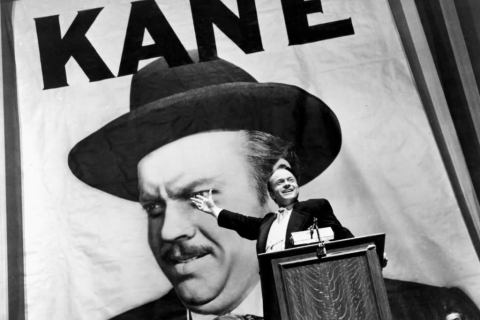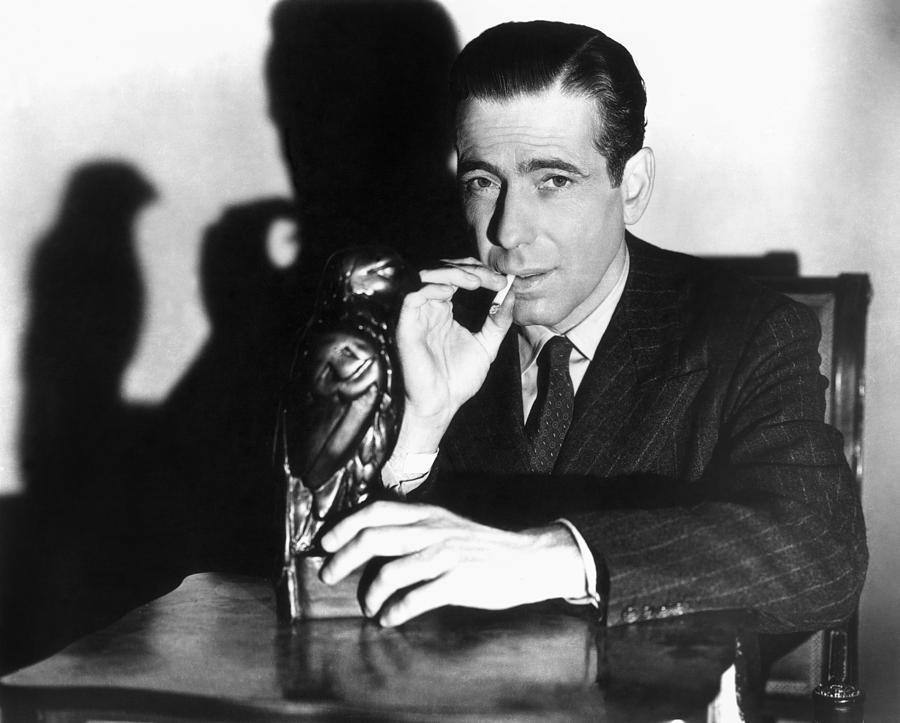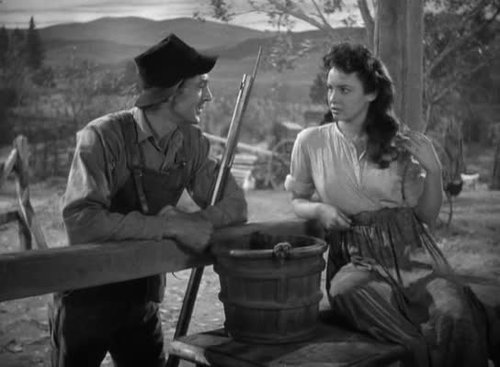
This movie page looks at 1941 Top Grossing Movies. Finding box office information for movies made in the 1930s and 1940s is extremely difficult. For somebody looking for box office information on 1941 it is very very frustrating. Over the years, we have researched and collected information on over 33,000 movies. So we figured we would show all the 1941 movies in our database.
To make this list a movie had to be made in 1941. Obviously many movies made in 1940 earned box office dollars in 1941. On the other side many movies made in 1941 made money in 1942 and later. This page will looks at 139 1941 Top Grossing Movies. The movies are listed in a massive table that lets you rank the movies from Best to Worst in six different sortable columns of information.
The following massive table only includes the movies made in 1941 that are in our database. Since we are constantly adding new movies to our database….this page will quickly become obsolete. We will try and update this page on a regular basis.

Our UMR Top 50 of 1941
1941 Top Grossing Movies Can Be Ranked 6 Ways In This Table
The really cool thing about this table is that it is “user-sortable”. Rank the movies anyway you want.
- Sort 1941 Top Grossing Movies by the stars or in some cases the director of the movie.
- Sort 1941 Top Grossing Movies by domestic actual box office grosses (in millions)
- Sort 1941 Top Grossing Movies by domestic adjusted box office grosses using current movie ticket cost (in millions)
- Sort 1941 Top Grossing Movies how they were received by critics and audiences. 60% rating or higher should indicate a good movie.
- Sort by how many Oscar® nominations and how many Oscar® wins each 1941 Top Grossing Movies received.
- Sort 1941 Top Grossing Movies by Ultimate Movie Ranking Score (UMR). Our UMR score puts box office, reviews and awards into a mathematical equation and gives each movie a score.
My Main Sources
Source 1: Eddie Mannix MGM Ledgers
Source 2: C.J. Tevlin RKO Ledgers
Source 3: Variety Magazine – January 6th 1943
Source 4: Year In Review Variety Editions – 1941,1942,1947,1954,1961,1968,1971,1974
Source 5: Grand Design: Hollywood As A Modern Business Enterprise 1930-1942 by Tino Balio
Source 6: Twentieth Century-Fox A Corporate and Financial History by Aubrey Solomon
Source 7: Wikipedia
Source 8: IMDb.com
Source 9: “Revenue sharing and the coming of sound” by H. Mark Glancy
Source 10: Hollywood Power Stats by Christopher Reynolds
My Yearly Review Pages
- 1939 Movies Ranked Best to Worst Our movie of the year? Gone With The Wind
- 1942 Movies Ranked Best to Worst Our movie of the year? Mrs. Miniver
- 1946 Movies Ranked Best to Worst Our movie of the year? The Best Years of Our Lives
- 1952 Movies Ranked Best to Worst Our movie of the year? Greatest Show On Earth
- 1959 Movies Ranked Best to Worst Our movie of the year? Ben-Hur
- 1976 Movies Ranked Best to Worst Our movie of the year? Rocky
- 2011 Movies Ranked Best to Worst Our movie of the year? The Help
- 2012 Movies Ranked Best to Worst Our movie of the year? Argo
- 2013 Movies Ranked Best to Worst Our movie of the year? Gravity
- 2014 Movies Ranked Best to Worst Our movie of the year? American Sniper
- 2015 Movies Ranked Best to Worst Our movie of the year? The Martian
- 2016 Movies Ranked Best to Worst Our movie of the year? La La Land
If you do a comment….please ignore the email address and website section.

Cogerson
Very interesting info on 1941 movies. A great year.
My take is that the old Hollywood of the studio era peaked between 1939 and 1942. After that the war badly hurt movie production for two reasons. One–about 20% of talent from actors to the technical staff went into the military. Two–harder to get a direct handle on, but it seems reasonable that the flow of new talent was badly reduced by military service. The total number of features produced fell by 30% from 1942 to 1945. Off my watching over the years, the quality decline is not only noticeable in the big features, but even more so in B’s.
The biggest development overall in 1941 was the fall of MGM. (I will post on this tomorrow after I get my research finished. I am about ready. I hope you will find my take interesting)
I will not comment on the usual classic subjects (Kane, Falcon, Foxes) but the ones I think are underrated. Two stand out for me. I Wake Up Screaming with its noir style and great twist ending, and H. M. Pulham, Esq. with an unusual for that era “road not taken” character examination. Hedy Lamarr’s favorite of her roles.
I have only seen 57 of your listed movies, although like Dan I have watched tons of the B’s and all the serials. Never kept a record though.
Anyway, an interesting subject.
Hey John.
1. I understand your point about the studio system peaking in 1942…..but I think the box office peak was after the war. 1946 is best year for movie ticket sells in the history of Hollywood.
2. After the war…it seems people did two things….make babies and go to the movie theaters.
3. I think television had a lot to do with the studio system falling apart….that and the power of stars like Jimmy Stewart (his Winchester 73 contract).
4. I look forward to reading your MGM take.
5. I have not seen either I wake up Screaming or H.Q….I will have to check those movies out.
6. Good information on the decline of the serials and big budget movies.
Great feedback.
Cogerson
1—–I was referring to peak period in terms of quality of the films, not box-office. I guess you are even more of a green eyeshade sort of guy than I am, which considering I am a miserly, money-grubbing old Scrooge, is really saying something.
2—–on box-office, though, the era from 1946 to 1949 was actually one of rapid decline for Hollywood, so much so that there was a longing for the “golden age” before WWII. It was made worse because the economy in general was booming. One producer was quoted as saying “Hollywood is an island of depression in a sea of prosperity.”
3—–Why? Inflation of production costs. The cost of an average movie doubled between 1941 and 1946, reaching $665,000 in 1946. This includes B’s. A question for you as you have so many stats on these things–do your stats show that the “gross” was in fact twice as high on average in 1946 as it was in 1941?
4—–1946 itself was a very good year apparently, so the quick decline is somewhat surprising. My question is why? Could it be the soldiers catching up with wartime releases? Heavy dating with the men returning from overseas and movies being a cheap date for guys who didn’t have a lot of spending money?
5—–from 1946 to 1949 total gross fell from 1.7 billion to 1.45 billion. Profits from 120 million to 33.6 million. That there was still that much profit was due to retrenchment. Budgets were slashed and shooting schedules reduced. The average shooting schedule for a Paramount film dropped from 55 days in 1946 to 41 days in 1949. A far greater percentage of B’s were produced. In 1947 the major studios produced 136 A’s and 110 B’s. In 1948 they produced 100 A’s and 156 B’s.
6—–movies which might seem to have been big hits were in fact marginal or even money losers. Duel in the Sun apparently barely broke even despite being one of the top grossers of the entire decade. A huge production budget, followed by a huge advertising budget, and the use of saturation booking (which demands more copies be produced) ate the huge gross up. Unconquered supposedly actually lost money.
7—–What caused the inflation? Well apparently the Hollywood unions were forcing higher salaries and shorter working hours thus pushing up costs. Most think of the blacklist as being political, and it sure was to an extent, but it was also instituted to break or rein in the unions, where leftists were prominent in the new militancy.
8—–But whatever, movies clearly were losing popularity in the 1946 to 1949 era. Why? TV can’t really be the explanation yet, as few had sets. The divestiture decision of 1948 (forcing the studios to de-couple from their theatre chains) couldn’t have had that immediate an impact. More important might have been the heavy taxes imposed in Britain and other countries on foreign film profits. There was an escape clause. Paying taxes could be avoided if the money didn’t leave the country. The answer was filming on location, which had the added bonus of skirting the Hollywood unions, and rapidly became the norm in the 1950’s.
I have seen explanations for the late forties decline.
A—–rise of the suburb. Folks with houses were less likely to go out for movies. This I can see. I know we went out a lot more back in the day when we lived in an apartment in San Francisco. It is different now that we have a rather expansive home. We are much more homebodies.
B—–the baby boom. I can see this. Young marrieds with infants either can’t afford a baby sitter, or they just prefer to stay home with the baby.
C—–prosperity. The theory here is that as folks got more money they had the option of affording more expensive entertainment than movies.
D—–the movies themselves. The theory here is that because of the budget inflation, the really big movies, the Gone with the Winds and Ben-Hurs, weren’t being produced and so there was a lack of blockbuster hits. There probably is something to this. Going all the way back, the biggies generally were the ones which pulled in the big audiences, even if production concentrated heavily on the low-budget western, comedy, and crime type movies. The biggies would return in the fifties and sixties as the studios rolled the dice more and more on super-spectacles. Some of course were huge hits. But a flop? Bankruptcy.
I do run on, don’t I. I will leave my MGM discussion for tomorrow. The decline from the 1939 to 1942 peak is pretty obvious if one sees movies from the two eras back to back, especially the lower budget B’s and serials, where the decline really stands out. Sets are much cheaper. Stock footage far more extensive. Casts smaller and with far fewer “names.” The “golden age” was a memory.
I just noticed that 131- When Ladies Meet has “Robert Tay” as the actor instead of Robert TAYLOR. Easily fixed.
Hey Flora….fixed….when a movie has so many stars that have UMR links….it stops the text when it runs out of room….in this case…it was 3 letters short…so Robert Taylor became Robert Tay….so I went and deleted it….thanks for the catch….it is appreciated.
Hey Flora….your new tally of 61 is duly noted…I wondered if that put you ahead of Lupino. Glad I got all of the ten Best Picture nominated movies on the page. I did a quick look through Dan’s list…and when I reached triple figures I stopped counting…..so I feel safe to say that Dan is the easy winner in this tally contest. Thanks for the return visits and comments.
Thank you for another complete classic year! What a treat for this guest to your B’day party 😉
Seen exactly 60 of the above listed (counted twice), and I found many fav’s among them, in fact too many to mention. But for the sheer memory of seeing Bette watching hubby Herbert Marshall die in The Little Foxes, the poignancy of Margaret Sullavan suffering so nobly in Back Street, the unending laughter induced by The Lady Eve and Ball of Fire, the sexiness of Veronica Lake in Sullivan’s Travels, the sadness of Vivien Leigh’s decline to the gutters in That Hamilton Woman, the beauty of Maureen O’Hara’s Angharad in How green was my Valley, Dietrich’s Glamour in Flame of New Orleans and the great melodrama projected in A Woman’s Face, these are the ones I choose to single out without back-checking.
Hey Lupino…thanks for going back in time and checking out our 1941 page. 60 movies doubles my total.
I like most of your favorites….though I have not seen Back Street or That Hamilton Woman.
As for the two Stanwyck movies …love them both and she was never sexier than in those two movies..
As always thanks for the feedback and the kind words about the page.
Hello Bruce,
Another a classic year !
1941, the year of the birth of film noir for the French, with Maltese Falcon. A good movie, but I prefer High Sierra by Raoul Walsh.
I’ve seen 22 movies of the list, and among my favorites are They Died With Their Boots On, Blood and Sand and How Green Was My Valley.
In France, of the 137 films on this list, the biggest hits were Sergeant York and How Green was My Valley, attracting over 3 million spectators each.
I was looking for the Western Union number from many years and I am delighted to see it. Can you tell me where you found him? And what is its actual rental?
Hey Laurent…..thanks for checking out our latest UMR page. Thanks for sharing the Top Box Office hits in France for 1941. Your tally and tally are pretty close …but well behind Dan and Flora.
So Citizen Kane did not crack your favorites? I am right there with you…it seems if you like movies you have to list Kane as one of your favorites. I think it is a good movie but it is not one of my favorites either.
As for Western Union…pretty sure I used the Harrison Reports for that one. I can give the rental numbers when I can see my database.
As always…thanks for the visit and the comment.
This is a good reflection about Citizen Kane. I think Orson Welles was a genius . Actually. He abounded with ideas about the framing, the light, the direction of actors, etc. But, in each of his films, he was never sure of finishing them for lack of finace, let alone being able to make others. So he put as many ideas as possible into each of them. Now, I think too many ideas kill ideas. In the end, I see more his films as essays than movies. If some are successful, like Citizen Kane or Touch of Evil, others are frankly missed I find, like Lady of Shanghai or Othello. One of his most beloved films is probably his most academic, The Magnificent Ambersons.
He was, in any case, an excellent director of actors, and he himself a very great actor, whom I particularly attended in the Third Man, among others.
Hey Laurent….good to know we are on the same page. Seems almost everyone of his projects was filled with chaos and behind the scenes disruptions….which makes some of his great movies even more impressive. Great comment…thanks for sharing it.